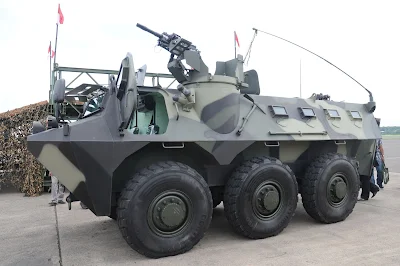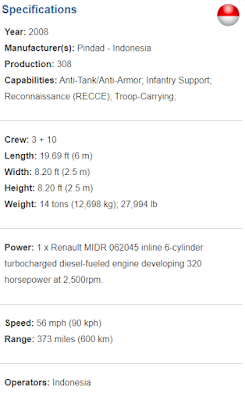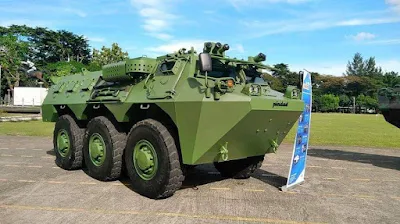And this relation came with recent strains in which one of those things that have caused this rift is centered on this particular agreement which involves the rotation of U.S troops within the country which is at risk as a result of a highly-political matter which will be less discussed on this article.
Pitz Defense Analysis note: This article is only with facts provided and supplanted with references highlighted in red which will be redirected to a specified link. It is better to read it in detail before making any violent reactions herein.
IN THE HEADLINES
 |
| Both the troops from the United States and the Philippines have participated in exercises like those for KAMANDAG 3 as specified in the image above. From DVIDSHUB. |
This development came as the latest one coming from the administration in which they show discontent to the United States and its so-called intervention to other sovereign nations as what the naysayers were harping all along, which in itself is not surprising given that it is consistent by its nature from the things have been way back 2016, the year that the current administration rose to power.
Setting these highly-political details that may spark an argument on both sides of the equation aside, let it be known that the agreements that the Philippines currently have with the United States are essentials for both nation's national security and defense as both sides share their respective pieces of knowledge that mean a lot in interoperability and camaraderie between the both nation's Armed Forces.
And with this discussion came the necessity of providing the required learning especially that this topic which involves national defense matters between the country and its closest ally, in a sense that more knowledge is required to be provided to dismiss any misinterpretations or misunderstanding of the context dealing with these agreements forged by both sides.
So, let us take it deeper as it will be worthy to understand it up in detail regarding the agreement, its correlation to the US-Philippine relations as well as with the latter's national defense ranging from external defense down to counterterrorist operations that takes place in the country.
Before proceeding, we kindly encourage you to read this article: "What It Means to be a Treaty Ally?" written May 13, 2018.
KNOWING THE PH-US VISITING FORCES AGREEMENT
 |
| A United States Coast Guard vessel and the BRP Andres Bonifacio participated in 2019's Maritime Training Activity "Sama-Sama". Obtained via DVIDSHUB. |
Ratified by the Philippine Senate in 1999 at the turn of the century, the Visiting Forces Agreement aims to promote defense cooperation between two closest allies as well as providing the Armed Forces of the Philippines the boost it needs in terms of providing external defense.
This agreement in itself is interdependent to the previous undertakings between the Philippines and the United States such as the 1951 Mutual Defense Treaty in which it was ratified back then to get into each other's help especially in case of an armed attack that took place between each other's territories as well as providing that portion of defense in the Pacific region.
It is with these agreements that the Philippines received its boost in terms of military capability and national defense wherein the United States provided things for the country to cope with the past and present spectrum of the combat environment especially with the present incursions that China has in the West Philippine Sea (which the United States show defiance through Freedom of Navigation Patrols) and counterterrorism operations that they provide the tools particularly the ones that involve surveillance.
Read more: "The U.S. Drones In Zamboanga City and the Philippine UAV Programs", written March 31, 2019.
With the Armed Forces of the Philippines undertaking its recent Modernization Program with respective projects distributed across the three military branches that it encompasses, one may have the idea that having these agreements with the United States helps augment the military's current shortcomings in its capabilities which is slowly being materialized.
As far as military capabilities are concerned, the United States is helping the Philippine and it's military through JUSMAG which provides the training, logistics, and advices that the Armed Forces will take with regards to how will it improve its capabilities as well as be updated with the latest intelligence particularly the ones that pose a threat for the country's national security and defense.
So, the Philippines as far as things are concerned is benefiting from this kind of help from the United States especially through this deal that the Philippine Armed Forces receives the support it needs to be an improved organization that goes along with its mandate of defending the country which is also essential to the security of the Asia-Pacific region, in line with terms that both nations have under the Mutual Defense Treaty.
EXAMPLES OF ITS IMPORTANCE
 |
| The United States provided firearms for the Armed Forces of the Philippines to have in improving its capabilities. Image Source. |
Another example is with Marawi Siege as the United States Armed Forces provided their Philippine Counterparts advisory and technical support while the latter is doing all the fight on the ground with all of those inputs provided on their plans which attains their objectives in line with counter-terrorism operations of the agreement.
That support is further provided with many exercises that the Philippines have with the United States, especially with bilateral military activities like the annual Exercise Kamandag and Maritime Training Activity Sama-Sama, as it bolsters interoperability and camaraderie between the personnel of both of the country's Armed Forces.
Aside from military-related activities such as the aforementioned exercises and support for technical and advisory matters, the agreement actually allowed the United States to provide all of the support it needs especially with regards to the Humanitarian Assistance and Disaster Response (HADR) situations wherein the Armed Forces badly needs logistics chain to support the citizens affected by natural calamities such as those who survived the onslaught of the 2013 Supertyphoon Haiyan or locally known as Yolanda.
It was on those tormenting, difficult times that the United States immediately provided help to the Philippines where there are no countries who have managed to make such a rapid response, given that the agreement allowed them to send troops and supplies for the affected ones to have in need especially on basic necessities.
Ultimately, the agreement helps the Philippines in deterring the current situation in the West Philippine Sea where aside from the support they provided, the United States is also active in countering Chinese hegemony with the freedom of navigation patrols they conducted as being against China's desire to dominate the whole South China Sea (West Philippine Sea) is something that the Philippines indirectly benefited.
These proofs are just showing that the Visiting Forces Agreement is something that both sides benefit from as the primary aim is to provide that defense posture with the Philippines having the support from the closest ally while getting itself armed for the better through the Revised AFP Modernization Program (R.A. 10349).
CHINA'S GAIN AND THE AGREEMENT'S CORRELATION TO THE OTHER U.S. AGREEMENTS LIKE THE MUTUAL DEFENSE TREATY AND EDCA
 |
| Female Chinese troops marching in Tiananmen Square during the 70th Founding Anniversary of the People's Republic. (c) AFP |
This is what the ex-envoy of the Philippines to the United States warned in which it goes in line with the examples provided in the article where it will definitely affect the country's resolve in its counter-terrorism efforts as well as on the country's efforts to keep the West Philippine Sea in check, particularly the activities that China has over its outposts, its ships deployed there and proxies like the Maritime Militia.
Furthermore, the scrapping of the agreement as well as the status of the already-weak Armed Forces of the Philippines against a regional power like China, it will be not surprising for the Chinese to grab the opportunity in emboldening and getting firm on their claims over the whole West Philippine Sea, making things difficult for the country to stand on its own without any support from a stronger ally like the United States.
While the Mutual Defense Treaty and the Enhanced Defense Cooperation Agreement or EDCA will not be included in the scrapping of the Visiting Forces Agreement, the recent stain between the Philippines and the United States still endanger these other two agreements that forged ties between the two nations as these agreements are interdependent one after the other and it will not be that far that the United States may do the same in scrapping these said two other agreements as they were incurring operational expenses such as in the case under EDCA as they are deployed in various Philippine bases across the country.
Then, the proposals made on tapping Russia and China as opposed to the U.S. in doing defense stuff that the United States covered under the Visiting Forces Agreement is in itself an absurd thing especially with China which is the very nation that encroaches on the country's domain in the West Philippine Sea, reinforcing the idea of the agreement's revocation working on benefits for the Chinese to have.
These developments seem to be working against what one sees as a fundamental of protecting the country from a neighbor that aspires one's backyard and its rich resources while getting on fostering ties on such a neighbor, setting aside the things that are seen as the thing that in line with the country's supposed interests.
Nevertheless, only time will tell regarding the outcome of the scrapping of the Visiting Forces Agreement and its implications in which it goes with the very defense posture that the Philippines desire has given that its existence provides that much a benefit as proven for the country's deterrence from external threats, counter-terror efforts and humanitarian assistance/disaster response.
WHAT REMAINS TO BE SEEN
 |
| The members of both Philippine and United States Air Force in photo-op after 2019's Bilateral Air Contingent Exercises Philippines or BACE-P. Image by SSgt Anthony Small, via DVIDSHUB. |
This pursuance for the revocation of the Visiting Forces Agreement is seen as the worse one since 2016 when President Duterte rose to power and the idea behind this proposal arose on the reasons that the United States apparently put the funding on hold for the country's anti-poverty projects.
On this proposal, one has indicated the impact of its revocation that may affect the commitment of the United States in deterring the Chinese in the West Philippine Sea as there will be no Philippine territory for the ships to dock in as this agreement is anchored to the country's national security as well as to its continuous obligations that are covered on other agreements such as the Mutual Defense Treaty.
Despite the current political headwinds, there still is hope that the country's military establishment is working on its best efforts to keep the agreement from falling apart or to save what they can from its revocation especially with the fact that the Armed Forces is benefiting more on subject matter exchanges and interoperability exercises with their counterparts.
In the end, it is worth to see what's in store for the country's defense posture for the years to come especially that the alliance between the Philippines and the United States is as just as important as the country's Modernization Efforts in which these setups are essential for the deterrence that the whole nation needs in countering both external threats like China and counterterrorism in which the agreements in a place like the Visiting Forces Agreement is something that shows its importance for the security and defense in the region.

































.png)



